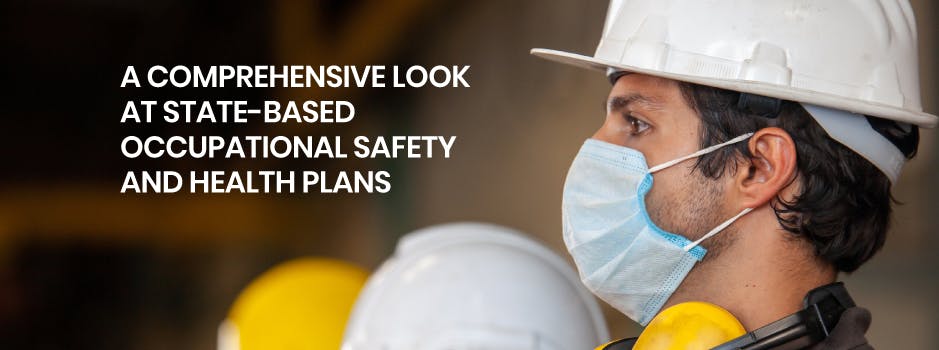States-Based OSHA Plans
States plans are OSHA workplace safety and health-approved programs. These are operated by United States territories and by individual states. There are now 22 state plans that cover both local and private-sector government workers. These state plans are then monitored by OSHA and they are least effective as OSHA in preventing injuries, protecting workers, death rates, and illness.
States-Specific Safety And Health Standards
Many states and united states territories operate the approved OSHA State programs. These state planes OSHA programs have States specific safety and health standards and it regulates the worksites in their states. Many state programs are now adopted by federal occupational safety and health standards (OSHA) and it is also known as regulations. It is then tweaked and then they are added to them with specific state information.
Many states have different standards that are applied to the state’s workplaces. When OSHA launches revised and new OSHA safety and health standard, the organizations and states approved OSHA state plan programs have 6 months and this results in effective and equal standards.
OSHA Cooperative Programs
OSHA offers many cooperative programs that are under labor groups, different organizations, and different businesses. These work cooperatively with organizations and agencies to help them prevent illness, injuries, and other accident ratios in the workplace. People can also take help to decide which cooperative program is right for them. If someone is living in the state with an OSHA-approved state plan, then they can contact their agency and get information about cooperative programs.
Some of the cooperative programs are as follows:
Alliance Program
OSHA alliance program helps the agency to build voluntary, and good working relationships with the company that is committed to building the workplace healthy and safe. OSHA works with companies to share data about OSHA resources with employers and workers to educate them about their rights.
OSPP (OSHA Strategic Partnership Program)
This OSPP allows the OSHA to partner with workers, employers, and labor organizations to establish goals and to build a safe and healthy workplace.
OSHA Challenge Program
This OSHA challenge program provides workers and employers to gain opportunity in improving and in building health and safety management systems. This program guides the participants to implement a good system and to prevent injuries, illness, and fatalities.
VPP (Voluntary Protection Programs)
VPP program recognizes employees and employers in the industry to implement a good and safe workplace and reduces illness and injury rates.
On-Site Consultation Program
OSHA's on-site consultation program offers confidential and no-cost occupational safety and health services for small to medium businesses. This onsite consultation program is not the same as enforcement and they do not result in penalties and citations.
State Plan Review And Approval
To gain OSHA approval for the development plan there are a few steps. The first step is the process of instituting the state plan for health and job safety. The state should make sure that OSHA will place all the necessary elements for an effective safety and health program.
Once the OSHA states documentation has been completed with all its development requirements then go for the certification. Certification is the permit that the OSHA state has put together a complete plan. As soon as the state has reached the point where the job and health standards are deemed. OSHA is then entered into operational status as soon as this occurs OSHA steps aside and allows the state to enforce the laws.
Then it comes to the final approval. As OSHA grants the final approval it allows the authority to cover occupational safety and health as they are addressed by the state regulations. The state should have met all the required materials and agreed to participate in the OSHA inspection system before they are allowed to operate without OSHA supervision.
How Does The OSHA State Plan Work?
There are many ways to approve the state plan process and the states have to complete the plans and they should be able to enforce the standards. The state plans and their enforcement should be less effective to get the approval. This process lasts several years and if the whole process goes well OSHA will turn the rules and responsibilities to the territory and state.
Some states have plans that are only applied to the private sector and the governmental sector are not covered by OSHA law. The federal agency is in charge of private employees and these employees will always remain under OSHA jurisdiction states.
Many OSHA plans to use federal standards so the rules are somewhat the same. Some of the states expand on this by making standards and adding rules to avoid hazards that affect the workers.
States Having Approved OSHA States Plans
22 States cover the public and private both sectors and these have OSHA-approved plans:
- Arizona
- Alaska
- California
- Hawaii
- Lowa
- Indiana
- Kentucky
- Michigan
- Maryland
- Minnesota
- Nevada
- New Mexico
- North Carolina
- Puerto Ricco
- South Carolina
- Oregon
- Tennessee
- Utah
- Virginia
- Vermont
- Washington
- Wyoming
OSHA 10 and 30 state training
OSHA 10 and OSHA 30 hour certifictaion in the standards will help many workers whether they are in OSHA or non-OSHA states. Where OSHA state plans are different as in Californian people have to need state-specific training as state-specific training is quite necessary. In New York, the OSHA plans standards are mostly the same as the federal law but for that people have to register for the training requirements.
Conclusion
OSHA tells which requirements and standards are applied to which workplaces and then it helps the employees to agree on those requirements and standards. OSHA set these requirements and standards that are based on the research of the workplaces such as input from experts, employees, and other many stakeholders. OSHA is also offering tools and many training to educate their employers and employees.

